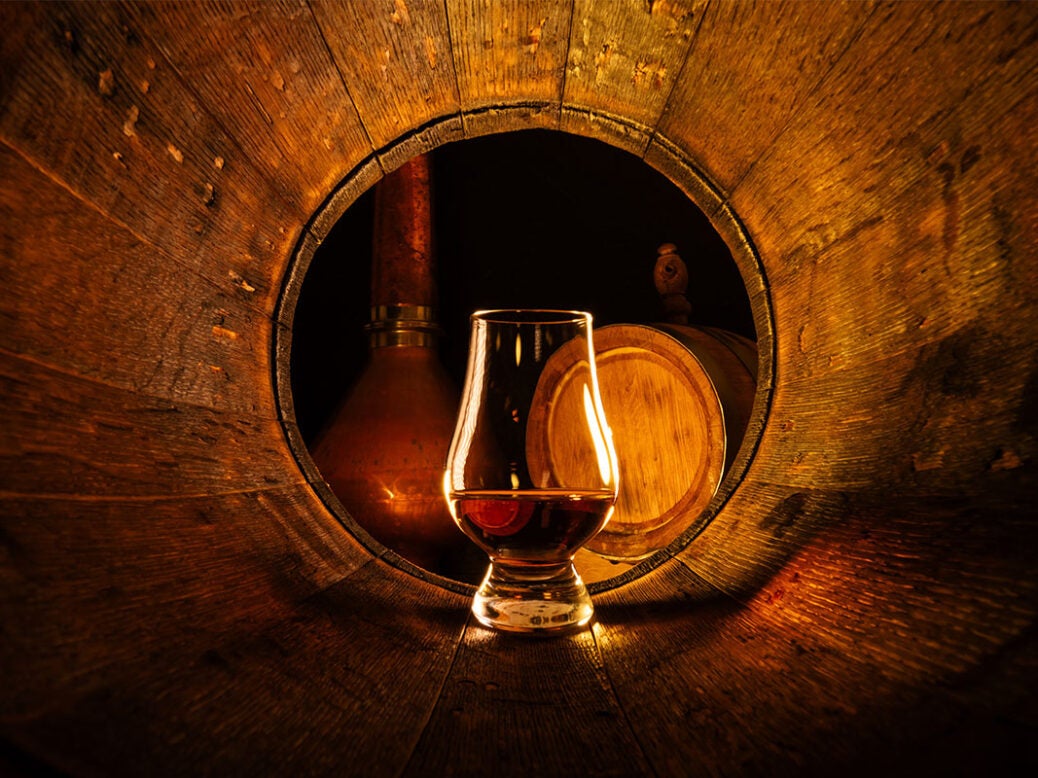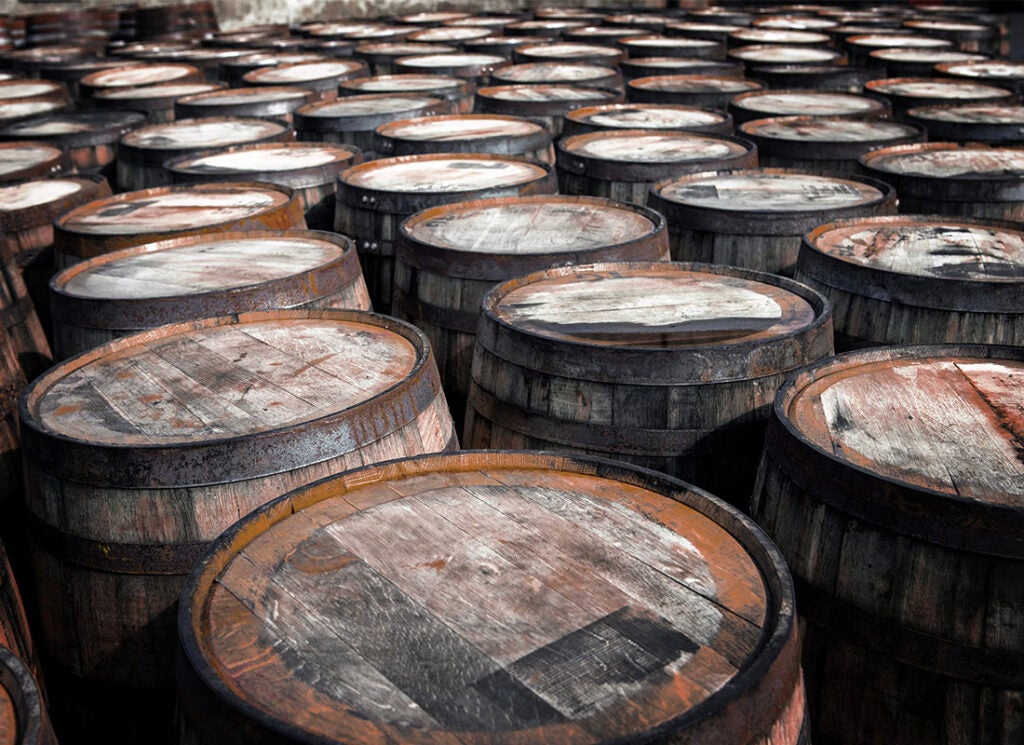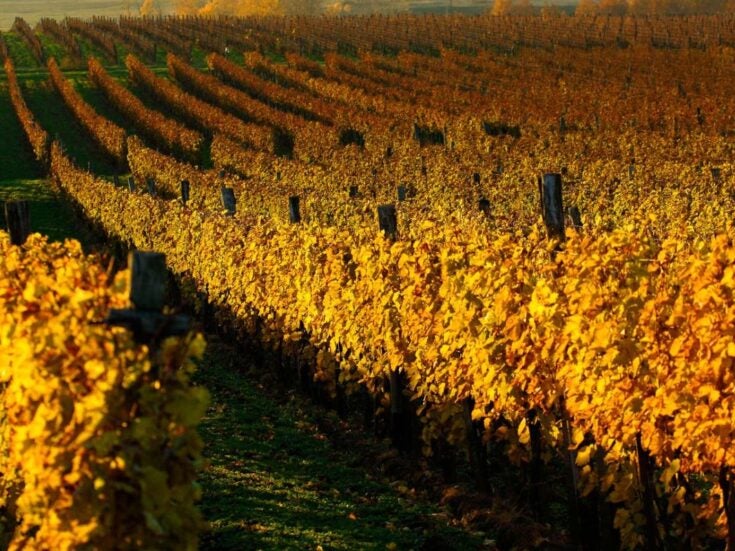
The idea of what constitutes an old whisky has shifted dramatically in recent times. In 1991, Glenfiddich stunned the whisky world with a 50-year-old single malt. These days, there are several of these released a year, plus 50-year-old blends (where every component has to be at least that old).
[See also: Best whisky advisers for collectors and connoisseurs in 2024]
In 2020, Gordon & MacPhail broke the record by releasing a Glenlivet distilled in 1940 – 80 years old! – aged in one of the independent bottler’s casks. Then, in 2021, The Macallan went one better with the 81-year-old The Reach. How much further could this be pushed? Could we reach a 100-year-old? And should we?
The problem with the process
First, let’s clarify what a 100-year-old whisky actually means. Unlike wine, whisky is not deemed to be ageing in the bottle, only when it’s in an oak cask. So the bottle of Macallan 1926 auctioned for £2.1 million in November 2023 was not 97 but 60 years old (bottled, as it was, in 1986); and, despite being distilled circa 1833, the ‘world’s oldest whiskies’ discovered at Blair Castle and auctioned in December 2023 were probably just eight years old – bottled in 1841.
The problem is that the same process that matures the living whisky also kills it – a metaphor if ever there was one. In a breathing oak cask, the poetic-sounding ‘angel’s share’ – the whisky lost over the years to evaporation – means a cask can empty by roughly 2 per cent a year (more at the beginning, less later). A 250-litre hogshead cask could yield just a few bottles after a century. Maybe worse, the process can shift the balance of ethanol and water in the barrel. In a damp, humid warehouse, less water evaporates. And, if the alcohol level drops below 40 per cent, it’s no longer whisky.
This presents a challenge, says Brian Kinsman, master blender for William Grant & Sons (including Glenfiddich and Wildmoor): ‘It’s a balancing act. A warmer, drier warehouse will slow the relative evaporation of ethanol but speed up overall evaporation.’

But Rachel Walters, director of operations at The Macallan, is confident that a 100-year-old can be created: ‘I absolutely believe it can be done if you have the right cask, the right conditions and you look after it properly. And that’s my job with all our casks. There’s no magic trick.’
[See also: Spirit houses mark bicentennials with celebratory releases]
Ironically, in the era in which thoughts have turned to ultra-ageing, the way most modern warehouses are arranged – with space-saving stacks of palletised casks standing on their end – makes it very difficult. ‘Can you imagine the pressure on the casks on the bottom stack?’ Walters asks. ‘Plus, the top of each cask is steadily drying out.’
The Macallan only uses traditional dunnage warehouses, with barrels lying on their bilge (ie the belly), as they’re designed. ‘There’s no weight on top of them,’ says Walters. ‘Whisky keeps the ends moist as well, which avoids cracking. And it allows my team access to inspect the oldest casks once a week.’
Stuart Urquhart, operations director at Gordon & MacPhail (which several industry experts predict will be the first over the line in the race to 100), concurs. They agree too on the type of cask required. ‘The majority of our older whiskies have been matured in first-fill sherry butts [around 500l],’ he says. ‘The bigger the cask, the less spirit is in direct contact with the wood, so maturation is slower.’
[See also: Inside the Port Ellen ‘ghost distillery’ as it reopens after 40 years]
There are also rumours of less subtle husbandry in certain warehouses that are vying to be the first to 100 – tales of barrels wrapped in cling film to stop evaporation, or frozen rods inserted to extract H2O (but not ethanol, which has a lower freezing point) to maintain alcohol levels above that crucial 40 per cent. To borrow from Jurassic Park, perhaps whisky makers are so preoccupied with whether they could make a 100-year-old whisky that they haven’t stopped to ask if they should?
The race for the 100-year-old whisky
Some independent experts say a 100-year-old whisky would simply taste like liquidised wood. But Brian Kinsman, who has access to the Grant family’s vast stock of their own and other distillers’ whiskies, is more positive, particularly after bottling an inky, treacly 56-year-old Ladyburn last year: ‘When I first started in whisky nearly 30 years ago, no one was aiming for a 100-year-old. But we’ve all evolved and seen that, if you nurture it and manage it, whisky does mature for amazingly longer than we used to think.’
Rachel Walters is one of the few people to have tasted Macallan’s 81-year-old The Reach. ‘It has all the flavour notes you’d expect from The Macallan, but the complexity just gets greater and greater, and you get this resinous antique quality,’ she says.
The distillery groups are reluctant to reveal which of their malts is likely to hit 100 (and it would be a single malt first – a blend would require too many components to reach the mark). Gordon & MacPhail has the advantage of a comparative overview of many different whiskies. ‘We have matured spirit from over 100 distilleries and have learned that certain spirits react differently over extended periods of time,’ says Urquhart. ‘Typically, a heavier style of spirit, such as a Mortlach or Glenlivet, tends to mature better for a longer period.’
Mortlach falls under the purview of Julie Bramham, MD of Diageo Rare Luxury, who plays down the importance of the milestone: ‘There is always something quite captivating about a luxury product with a significant age statement attached. But, for our audience, those that really appreciate the spirits and experiences that make up our portfolio, the reality is that the quality, the underlying provenance, and even more so today the experience surrounding it, are far more important drivers than a number.’
Jayne Murphy, marketing director of Chivas Brothers, which owns The Glenlivet and Longmorn, accepts that age is important for the luxury market, but says the whisky market is sophisticated enough not to regard it as the sole mark of quality. ‘For me, a high age statement has to be matched by extremely elevated quality. You can’t have one without the other,’ she says.
[See also: Ingenious ‘infinity wheel’ gives Rémy Martin Louis XIII decanters a second life]
There are many connoisseurs who dismiss the race to 100 as a gimmick. But every time a whisky maker presents an ultra-aged expression, they ask us to think back through history to when it was made. The trouble is, a 50-year-old released in 2024 evokes Bagpuss, the Three-Day Week and Tiger Feet. True history has to be older.
Everyone I spoke to for this story was at pains to deny there is a race, insisting that if a whisky is perfect at 95 or 98 years old it will be bottled, not held back. But this is like telling a cricketer to declare an innings just before they reach their century.
Some time soon – although maybe not for 10 years or so – you can bet someone will be raising their bat, or bottle, in triumph.
This feature first appeared in Spear’s Magazine Issue 92. Click here to subscribe







